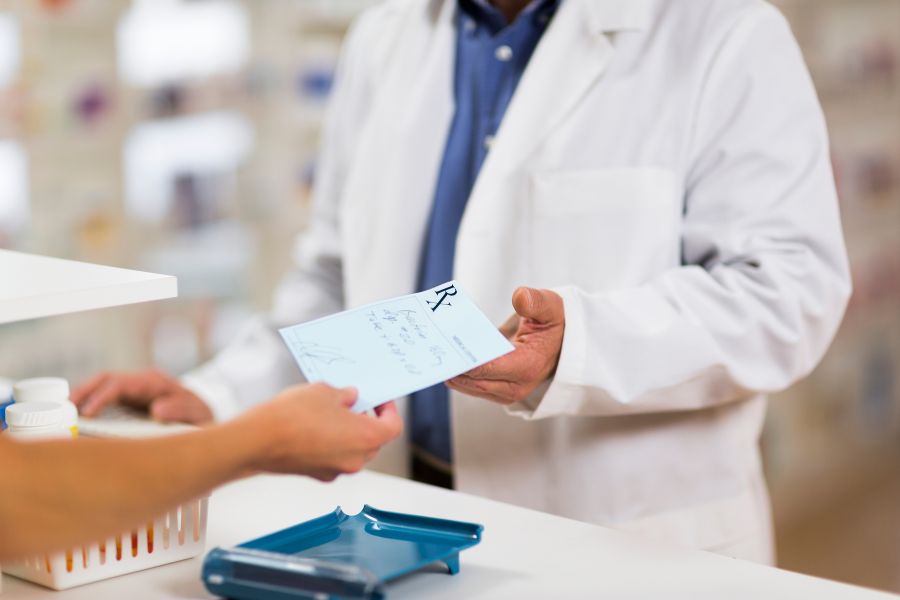Certain industries tend to grab most of the headlines when it comes to environmental, social, and governance (ESG) issues. The fossil fuel industry immediately comes to mind, as do the other extractives. Consumer-facing and manufacturing companies get a good deal of attention, too.
Of course, every industry can improve its sustainability and help people and planet. In a previous article we looked at the food industry, focusing on waste in restaurants, agriculture, and food production. While no one can become an instant expert in any industry, raising awareness can bring some interesting ESG issues to light that investors may otherwise overlook. In that spirit, this article focuses on sustainability in the pharmaceutical industry.
The first thing that comes to mind here is that drug companies can play an important role in achieving U.N. Sustainable Development Goal #3: Ensure healthy lives and promote well-being for all at all ages. SDG #3 encompasses a wide range of health and healthcare-related priorities, many of which are strongly aligned with the pharmaceutical industry’s goals, such as treating communicable and non-communicable diseases and helping to provide access to safe, effective, quality, affordable medicines and vaccines.
Of course, we don’t expect pharmaceutical companies to give away medicines for free – that wouldn’t be sustainable for the companies, and before too long they wouldn’t be around to give anything away to anyone, so that’s not the answer. We turn to experts on PharmExec and elsewhere for some insights about what the industry can do.
Incorporating circular use
In a brief opinion piece, Healthy Planet, Healthy People: How Pharma Can Lead the Way, one pharma executive argues that while many people think of the pharmaceutical industry as reactive—treating disease with medicines—the industry has a responsibility to be proactive—to minimize environmental impacts that contribute to health challenges, especially in poorer communities.
For example, while pharma products such as insulin and epinephrine “pens” can be life-saving, they create medical-waste, including plastic that ends up in landfills. Manufacturing most drugs requires water, and transporting them produces greenhouse gases. That means there are opportunities for more environmentally-conscious product design.
The model of a circular economy suggests one way the pharma industry can become more sustainable: recycling programs for plastic medical devices. Novo Nordisk’s TakeBack program allows patients to return insulin-delivery “pens” that are turned into chairs and lightbulbs! The company also changed much of the packaging used to transport products to an eco-friendly, insulated container (Biocooler®) that is compostable in almost all environments. This also helps reduce the need for refrigerated transport, reducing energy costs (win-win!).
Sustainable product development
Maintaining a “sustainability mindset” in research and development efforts can reduce the pharma industry’s environmental impact and produces a better patient experience. While most drug companies foster a patient-centric culture in their product development efforts, that doesn’t mean sustainability has to take a back seat.
Again, Novo Nordisk offers some inspiration. Not only does it reuse plastic pens used to deliver insulin, it is working to reduce what patients need to use in the first place. The company’s pipeline includes a once-a-week insulin product that would reduce the total number of plastic pens patients use. Other innovations are seeking to make insulin more resistant to temperature changes so refrigeration during transport is not required.
Friendlier packaging
With most consumer products, designing a package focuses on brand image. In the pharma industry, the main concern is that the packaging material comes in direct contact with the drug inside. Packaging must preserve quality and tell consumers how to use the product. At present, most of it involves plastic.
According to the World Health Organization, the pharmaceutical industry generates over 300 million tons of plastic waste each year, and 50 percent of that is single-use. Given that 85 percent of the trash generated by healthcare-related entities, including packaging for pharmaceuticals and medical equipment, is non-hazardous, it could potentially be replaced by more environmentally friendly and/or reusable alternatives.
According to a recent report on sustainable, biodegradable and eco-friendly packaging, about 10-25 percent of pharmaceutical packaging now uses sustainable solutions; for example, some companies are pursuing plant-based packaging made from corn starch, sugarcane, and cassava. Greener packaging solutions can appeal to consumers, as Trivium Packaging’s 2021 Global Buying Green Report stated that over 80 percent of younger consumers said they would be willing to pay extra for environmentally friendly packaging.
E&S practices are improving pharma’s reputation
The website FiercePharma reports that analysts from RBC Capital note that pharma is “making gains in ESG and emphasizing its importance to the investment community.” Their research shows that healthcare companies with strong ESG profiles have outperformed. Whereas the pharma industry has been challenged by societal issues such as the opioid epidemic, high drug prices (and in some cases, price gouging), and product safety problems, the momentum in terms of pharma’s ESG track record seems to be improving.
Many sources comment that the COVID-19 pandemic was a “tipping point.” While it usually takes more than 10 years to develop a vaccine, drug manufacturers collaborated with academia and governments to produce and distribute COVID vaccines in about a year. This allowed economies across the globe to reopen while saving millions of lives and reducing the unsustainable burden on hospitals and healthcare providers. AstraZeneca pledged to provide COVID vaccines on a not-for-profit basis to low- and middle-income countries in perpetuity, showing a changing attitude within the pharma industry.
PharmaExec reports that in a survey of pharma industry executives, 83 percent expect that within five years, contracts they sign with contract development and manufacturing organizations (known as CDMOs) will include specific “sustainability metrics” regarding full waste recycling, the use of renewable power, and the use of “green” chemistries. And venture capital firms say that good ESG practices represent value to early-stage biotech firms and companies with good ESG track records are likely to deliver better valuations.
Governance and litigation risk
And finally, let’s not forget the importance of good governance. Investors have long been aware of the risk presented by potential lawsuits in the pharmaceutical industry. These lawsuits may involve harmful drug side effects, manufacturing quality issues, and accusations of deceptive marketing. The more complex the company, the greater the risk of facing a range of liability issues and potentially large fines. Strong governance helps drug companies reduce this risk.
Cybersecurity and paying careful attention to data management are also critical in the pharma industry. An accidental leak of patient-related data (e.g., in running clinical trials) could be devastating in terms of the loss of trust, in addition to possible fines or more significant regulatory action.
OWL’s data looks at ESG practices at companies in all industries, including the pharmaceuticals. Whether you are a company representative and you want to benchmark your company against others, or you manage investments and want to analyze portfolios to show clients how their investment dollars are making a difference in ways that matter to them, OWL can help. Contact us to discuss how you can use the most accurate ESG data available.




